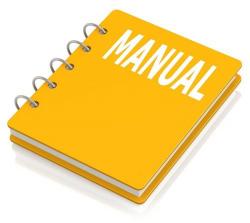Alfa Romeo 147 2000-2010 Workshop Repair & Service Manual
Catalog:
Model:
Complete digital official shop manual contains service, maintenance, and troubleshooting information for the 2000-2010 Alfa Romeo 147. Diagnostic and repair procedures are covered in great detail to repair, maintain, rebuild, refurbish or restore your vehicle like a professional mechanic in local service/repair workshop. This cost-effective quality manual is 100% complete and intact as should be without any missing pages. It is the same factory shop manual used by dealers that guaranteed to be fully functional to save your precious time.
This manual for 2000-2010 Alfa Romeo 147 is divided into different sections. Each section covers a specific component or system and, in addition to the standard service procedures, includes disassembling, inspecting, and assembling instructions. A table of contents is placed at the beginning of each section. Pages are easily found by category, and each page is expandable for great detail. It is in the cross-platform PDF document format so that it works like a charm on all kinds of devices. You do not need to be skilled with a computer to use the manual.
MAKE: Alfa Romeo
MODEL: 147 (1.6 TS, 2.0 TS, 3.2 V6, 1.9 JTD 8V, 1.9 JTD 16V)
YAER: 2000 2001 2002 2003 2004 2005 2006 2007 2008 2009 2010
LANGUAGE: EN/DE/ES/FR/IT/NL/PL/GK/PT/TR
EXCERPT (2000-2010 Alfa Romeo 147 Service/Repair Manual):
CONSTRUCTION FEATURES
The driveshafts are made from high resistance steel and have splined ends for matching with the constant velocity joints on the wheel side and the sliding joints on the gearbox side. The sliding joints are similar to the constant velocity joints, but have less articulation capacity. There is a balancing mass on the right driveshaft which damps vibrations. An intermediate shaft is fitted in order to be able to keep the length of the left and right driveshafts on the left side at the differential output the same. To prevent vibrations, depending on the version, the intermediate shaft is supported by a housing in the oil sump casting or by a support fixed to the cylinder block/crankcase.
The engine block is cast iron, with high mechanical strength.
The crankshaft is supported by means of five main bearings (1).
The cylinders are formed directly in the engine block, and are graded into three sizes plus one oversize.
There are special channels in the engine block walls which allow the flow of coolant and lubricating oil.
At the bottom of each cylinder, there is a jet (2) from which oil is sprayed onto the piston crown to cool it and ensure the lubrication of the gudgeon pin.
The engine oil is drawn in from the sump by means of the vacuum created by the rotation of the sprockets fitted on the crankshaft.
Vacuum is present between the sprocket separating wall (2) and the oil sump suction pipe.
Pressure instead develops after the separating wall (2) in all the oil delivery pipes (4).
When the pressure exceeds 5 bar, the force exerted on the limiting valve (5) overcomes the reaction of the spring below and moves the valve to open the connecting pipe between the pressure chamber (3) and the low pressure chamber (1).
1 - Low pressure chamber
2 - Separating wall
3 - Pressure chamber
4 - Oil delivery pipe
5 - Pressure relief valve
Closed operating position of oil pressure limiting valve.
Bypass operating position of limiting valve.
...





